Scenes from
a Road Trip
My golfing buddy Larry Mowell and I spent a week on the road in late October and early November, playing a few excellent golf courses in the Southeast. If it weren't for a rainout at Country Club of South Carolina in Florence, we would have played six days in a row, the first time I would have done that since another buddy trip to Myrtle Beach in 1969.
I hope the photos below capture the quality of the courses we played. (Larry took the photos at Ballyhack and Pawleys Plantation below, I took the others.) If you would like more information about the golf and the adjacent real estate, please contact me.
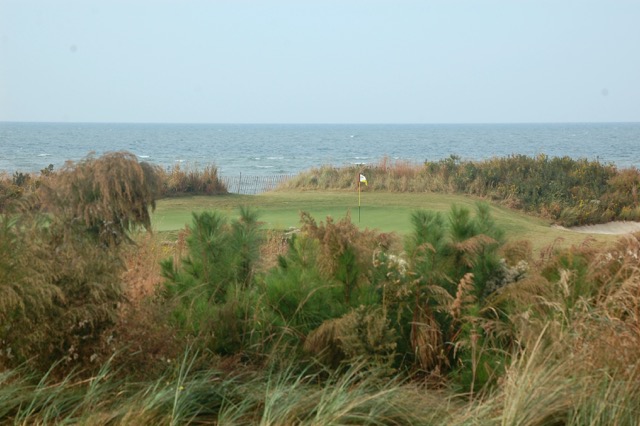
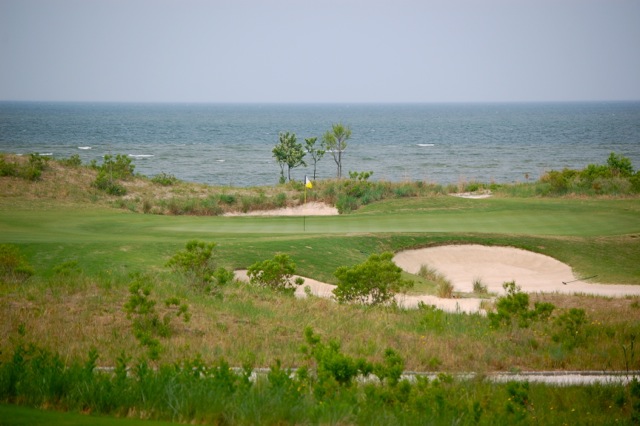
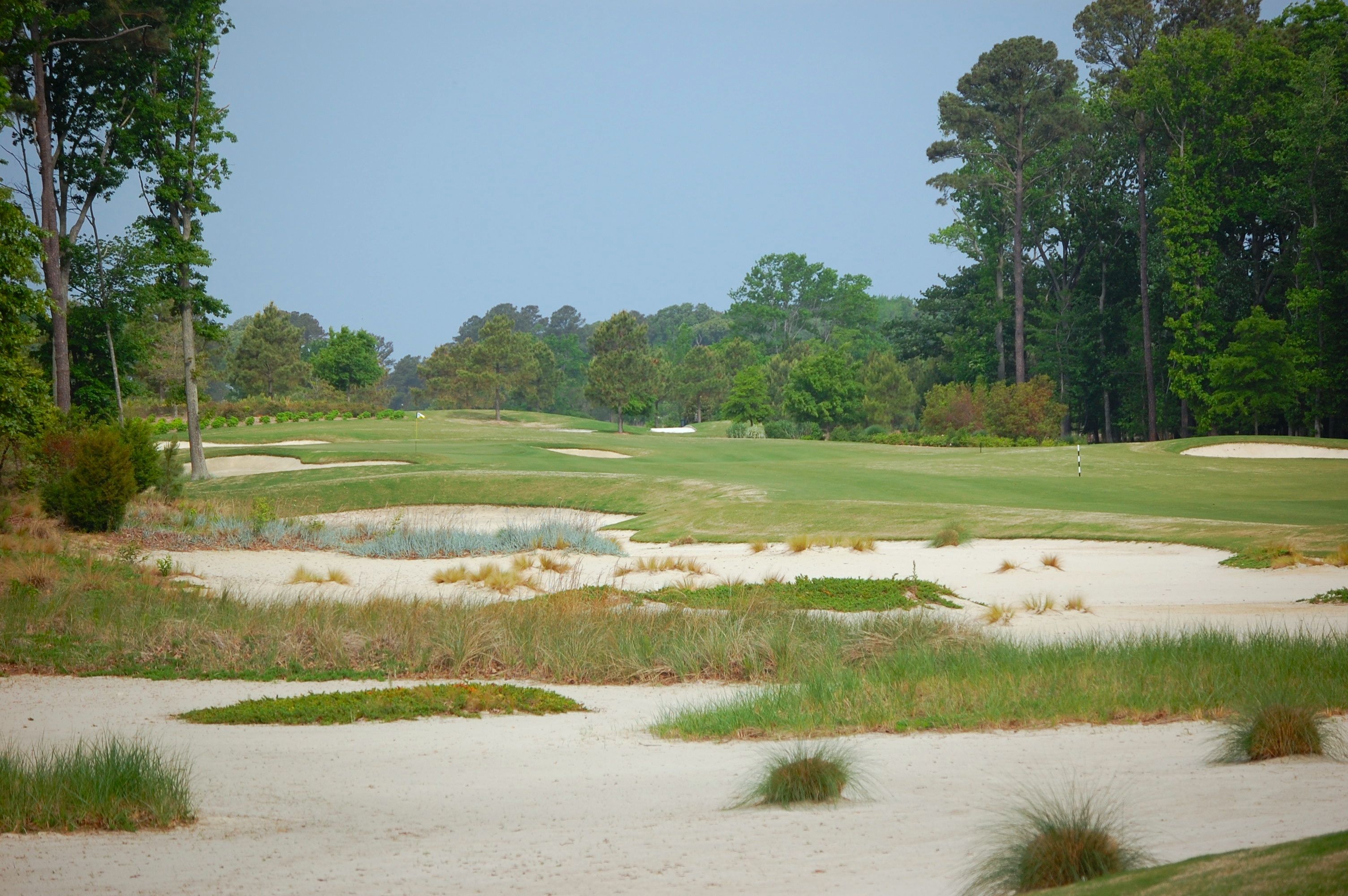 The front nine of the Jack Nicklaus course (above) at Bay Creek Resort in Cape Charles, VA, plays out toward the inner banks of the Chesapeake Bay, with a few holes running along the water. Nicklaus uses substantial bunkering to give most holes the feel of a links course. The front nine of the Jack Nicklaus course (above) at Bay Creek Resort in Cape Charles, VA, plays out toward the inner banks of the Chesapeake Bay, with a few holes running along the water. Nicklaus uses substantial bunkering to give most holes the feel of a links course.
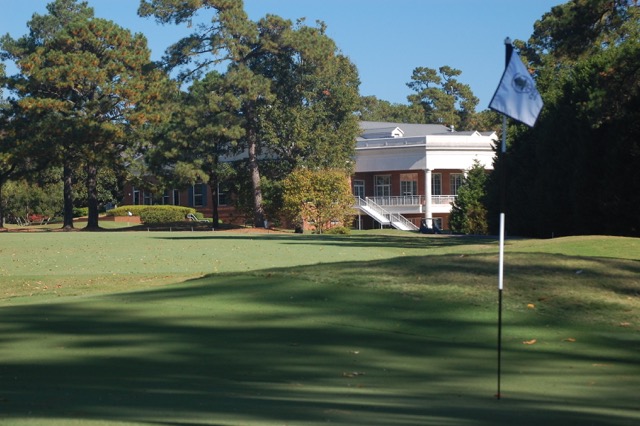
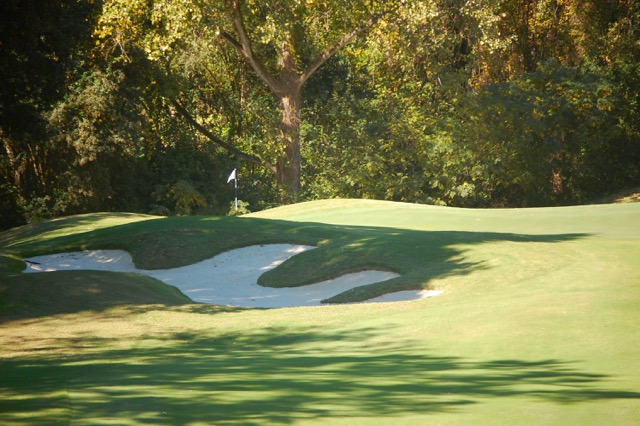
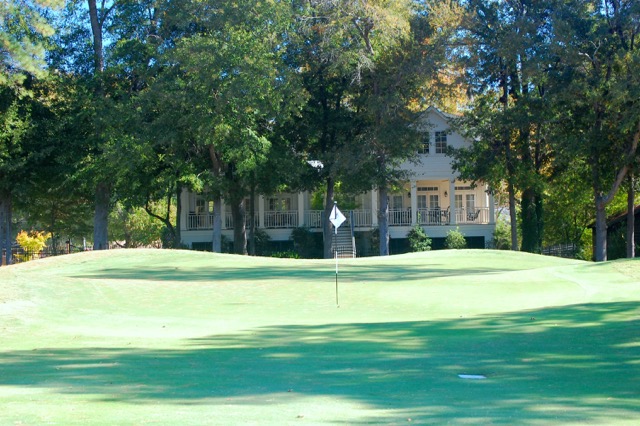 The clubhouse at Florence Country Club in Florence, SC (top), is as unpretentious as the golf course, but both are in the category of "classics." The course layout, which is sometimes described as "in the style of Donald Ross," features speedy, undulating greens that, although not crowned, make getting close to pins challenging. Very few homes can be seen from the fairways; the one above had the best views of all. The clubhouse at Florence Country Club in Florence, SC (top), is as unpretentious as the golf course, but both are in the category of "classics." The course layout, which is sometimes described as "in the style of Donald Ross," features speedy, undulating greens that, although not crowned, make getting close to pins challenging. Very few homes can be seen from the fairways; the one above had the best views of all.
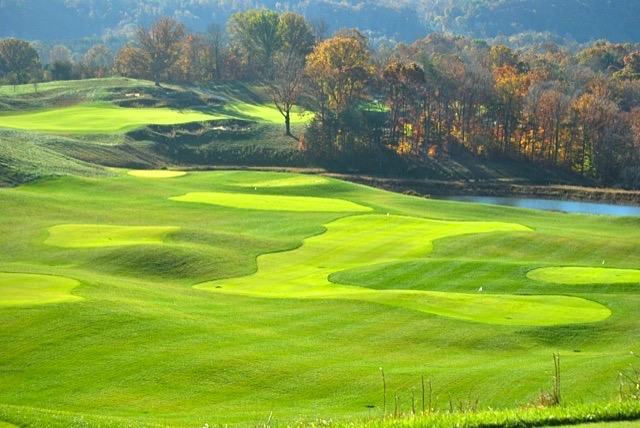
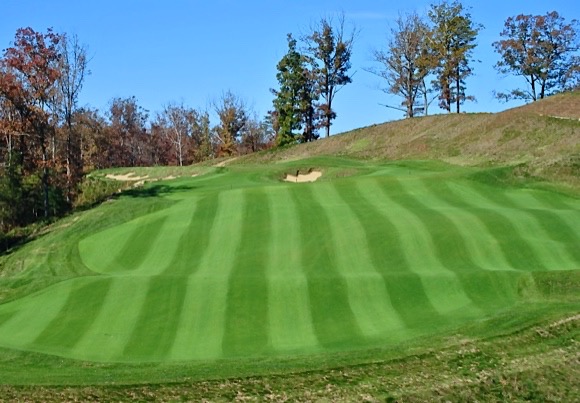
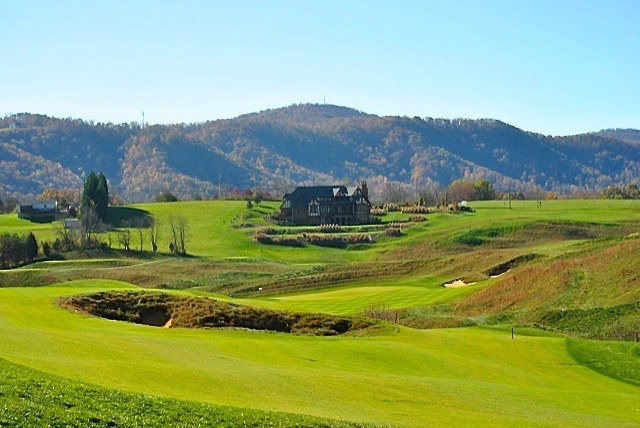 Even before you start your round at Ballyhack Golf Club in Roanoke, VA, the club makes a statement about quality and drama on the practice range (top). The drama continues on virtually every hole on the golf course. Only a small handful of homes are in view, but during our round, the chainsaws were working constantly to clear land beside the 1st hole. Even before you start your round at Ballyhack Golf Club in Roanoke, VA, the club makes a statement about quality and drama on the practice range (top). The drama continues on virtually every hole on the golf course. Only a small handful of homes are in view, but during our round, the chainsaws were working constantly to clear land beside the 1st hole.
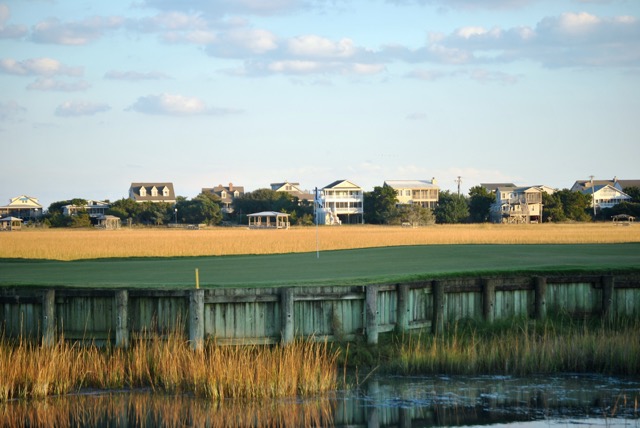
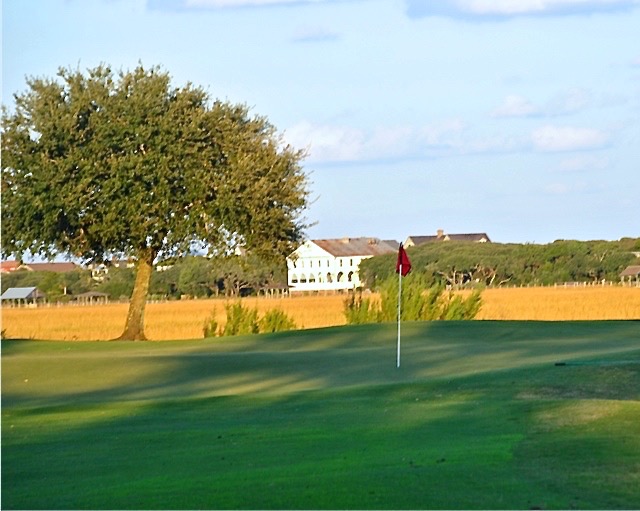 Homes on the Atlantic Ocean are a mere 3/4 mile from Pawleys Plantation's golf course in Pawleys Island, SC. The par 3 13th hole (top) with a peninsula green that juts out into the marsh is considered by members the "shortest par 5 in Myrtle Beach." The par 4 16th, which is connected to the 13th green by a narrow strip of putting surface, also brings the marsh into play. Homes on the Atlantic Ocean are a mere 3/4 mile from Pawleys Plantation's golf course in Pawleys Island, SC. The par 3 13th hole (top) with a peninsula green that juts out into the marsh is considered by members the "shortest par 5 in Myrtle Beach." The par 4 16th, which is connected to the 13th green by a narrow strip of putting surface, also brings the marsh into play.
|
Some Random Observations from
Tee Boxes and the Road
I spent a recent week on a buddy golf trip, with stops to play rounds on the Delmarva Peninsula in Virginia, in Pawleys Island, SC, in Florence, SC, and finally back in Virginia, in the Roanoke area. I was behind the wheel for nearly 2,000 miles of driving, and I had plenty of time to think about the courses I played and about ideas that might be of interest to my readers. Here are some random observations that occurred to me along the way.
Great Golf Not Quite in the Middle of No Place
In real estate, you pay for location. All things being equal, a home near a city that provides jobs and top-flight services will be valued higher than one located in East Jabip. Folks looking for a second home can take advantage of the comparably lower prices in remote golf communities if they are willing to compromise a bit.
Our first stop on the recent golf trip was at Bay Creek Resort in Cape Charles, VA. The DelMarVa Peninsula – comprising the states of Delaware, Maryland and Virginia – is shaped like a hand with a finger pointing south. Cape Charles is virtually at the tip of the finger. Bay Creek is a golf community, one might argue, that should never have been built. Cape Charles is a charming but small town that prospered as a railroad transportation hub through the early part of the 20th Century but whose glory days passed when the passenger trains stopped coming in the 1950s. Although a supermarket on Highway 13 is a mere three miles from Bay Creek, and there are two or three decent restaurants in the city, other services are not abundant; the nearest city of any size is Norfolk, VA, 30 miles south and on the other side of the Chesapeake Bay, with a charge of $18 roundtrip over the breathtaking Chesapeake Bay Bridge and Tunnel. It is hard to imagine many Bay Creek couples making the trip for casual nights out.
But for those interested in a second-home, Bay Creek’s location and amenities work in its favor. Most obvious is the golf, 36 holes by Arnold Palmer and Jack Nicklaus, the first property to host separate 18-hole layouts by the two legends. (Palmer first in 2000 and Nicklaus seven years later.) They are both terrific golf courses that take advantage of their location beside the inner reaches of the Chesapeake Bay where Bay Creek’s developer recently added a beach club. This means that Bay Creek can appeal to a family in which one or more members play golf and others prefer sandier pursuits. Also importantly, Bay Creek is deceptively close to the major population centers of the Northeast (and, as mentioned, Norfolk, as well as Richmond). A couple or group of golf buddies setting out from the New York metro area early in the morning can be on the first tee at one of the Bay Creek courses by 2 p.m., especially if they arrive at the Cape May (NJ) ferry to Lewes, DE, within a half hour of its departure. Golfers from Philadelphia, Baltimore and Washington have appreciably shorter drives.
Second-home prices at Bay Creek are certainly appealing, with condos in the units known as The Fairways, running along the 11th hole on the Palmer course, listed from $205,000 (for a 3 bedroom unit comprising 1,500 square feet). One townhome, a bit more elaborate than a condo and featuring 2,200 square feet and 2 bedrooms, is listed at $289,000. For those with a boat or an interest in marina living, the lowest priced single-family home at Bay Creek, a 3 bedroom, 3 bath 2,900 square foot “Bahama” model on the Cape Charles shoreline two miles from the resort’s front gate, is listed at $399,900.
Lack of Privacy and Divot Issues, But What a Bargain
Financially speaking, perhaps the worst “investment” I ever made was in purchasing a full-golf membership when I bought a vacation condo at Pawleys Plantation in South Carolina in 1999. But the developer offered to pay for half of the $15,000 initiation fee, and the $175 a month in dues seemed reasonable, even if I did not plan to use the condo more than a couple of months annually.
Fifteen years later, I am sure that if I divided my total cost of membership by the rounds I have played over the ensuing 180 months, my per round green fees would be more than $250. Of course, members who play golf a steady three or more times a week might look on their membership as a bargain. Some of my year-round golfing neighbors at Pawleys do.
For most couples, though, especially those looking for a country club experience at a reasonable price, a semi-private golf membership is appropriate and a good deal. (I don’t like the term “semi-private” because it implies that half the club is private and half is not when, in fact, rarely is space carved out for members only.) My round at Pawleys recently with my golfing buddy reminded me of the good, the bad and the ugly about membership in a club that permits outside play (in the case of Pawleys Plantation, lots of outside play).
First the Good: The guys at the bag drop greeted my by name, and when I have a guest in tow, especially one who belongs to a couple of golf clubs known for great service, I feel a modest burst of pride. The golf course was in about the best shape it has ever been, a result of National Golf Management, the latest owners, pouring money into maintenance, something that is easier for them to do because the club is generating robust green fee income. The Bad: Visiting golfers who play only one or two rounds on my golf course and then leave for home do not have a vested interest in course maintenance; it is not unusual for me and other members to fix multiple ball marks on greens, rake footprints in bunkers, and pour sand into an extra divot or two made by others. The Ugly: Five-hour rounds, something that private clubs do a much better job of policing than do public clubs; if you rely on outside green fee income, you do not want to torque off the paying customers who might otherwise return the following year to plunk down another $100 or so in green fees.
The bottom line is the bottom line: If you want to be treated as if you are a club member, you play golf at least three times a week, and you don’t mind the occasional slow round (which gives you the opportunity to fix ball marks and fill divots), then a semi-private membership is a financial bargain. Or, alternatively, you might consider…
An Annual Membership on a Terrific Golf Course
My guest and I played a round in Pawleys Island at Caledonia Golf & Fish Club, arguably the best golf course of the 100 or so that span the entire Grand Strand of Myrtle Beach, from Brunswick County, NC, south to Georgetown, SC. The course was designed by the late Mike Strantz whose relatively few layouts run the gamut from the ridiculously wild, like Tobacco Road in the Sandhills of North Carolina, to the sublime, whose definition Caledonia fits, with plenty in between but skewed toward both ends of the spectrum (e.g. Royal New Kent near Williamsburg, VA, on the wild end, and Monterey Peninsula’s Shore Course in the sublime category). Caledonia offers an annual membership which, in 2014, was priced at $1,900; for a year-round resident who plays eight rounds of golf per month or more, that represents an enormous discount over what a visiting golfer pays at Caledonia. (The rack rate during peak season is up around $200, although “package” players probably pay about half that.) Still, to play a golf course as excellent as Caledonia for as low as $20 per round is an enormous bargain.
The added benefit of such a membership is that you don’t have to live in a golf community –- Caledonia features no real estate inside its boundaries -– and can save on homeowner association fees by living in a neighborhood that doesn’t feature a full roster of amenities unless, of course, you are looking for an on-site fitness center, Olympic-size pool and fancy clubhouse. (By the way, Caledonia offers one of the best lunches in the Myrtle Beach area, with killer views of the expansive marshland or, if you prefer, the long and amoebic 18th green.) Nice single-family homes less than a five-minute drive away start in the $200s and, across the street from neighboring True Blue Golf Club, Caledonia’s sister course and a layout closer to the wild end of the Mike Strantz spectrum, three-bedroom condos are priced from just $126,000.
Small Town Living, Big Time Golf
Perhaps the most consistently enjoyable round of golf during our buddy golf trip was at the unpretentious but refined Florence Country Club in the small South Carolina city that gives the club its name. The town of Florence, which bumps up against Interstate 95, the east coast’s major north/south route, is home to fewer than 40,000 people. The golf club is 90 years old and it claims to have been designed “in the Donald Ross style,” although its true architect is unknown. I don’t know about the Ross allusion, since the greens were more undulating than crowned, but the fairways were generous, the green complexes interesting and often intricate, and the entire effect classic rather than modern. (And while the greens may not have been Rossian difficult, the greens keeper must have known we were coming because virtually every pin was at the base or the top of a rise. Still, we loved it for its challenge, fairness and fast and smooth greens.) The course was in beautiful shape.
The visit to Florence reminded me that there are outstanding golf courses virtually everywhere, and that one could be quite content playing just one or two different golf courses consistently. We were rained out of a round at Country Club of South Carolina, also in Florence, but I played that modern course a couple of years ago, and the pairing of it and the more traditional Florence CC -– memberships are reasonably priced at both clubs -– would satisfy any but the most peripatetic golfer. And because Florence is not exactly a magnet for retirees, real estate prices in the area are appreciably lower than in areas that market themselves to retirees. Big and beautiful homes in Florence are listed at about $110 to $125 per square foot.
Getting Too Old for This
Roanoke, VA, almost three times larger than Florence (population nearly 100,000), nevertheless meets the definition of a small city. It was the last stop on our buddy trip, and I was excited at the prospect of showing my golfing friend one of the most visually dramatic and difficult golf courses I have ever played, Ballyhack Golf Club. Designed by Lester George -- he also did the highly rated Kinloch near Richmond -- Ballyhack is a mere 10 minutes from the city but occupies a sprawling piece of property that seems as if it could be hours from civilization. When we dropped our bags in front of the hunting-lodge style clubhouse, I saw my golf buddy’s eyes widen at the site of the adjacent 18th green, which is 64 yards from front to back, or about four clubs difference depending on where the pin is (in our case, it was way back). The rest of the golf course is every bit as wild as the wildest Mike Strantz course, but considerably more difficult, especially in the 10 mph wind that kept changing directions on us as it swirled through the surrounding Shenandoah Mountains. I love the golf course, but at this point in my golfing life, it appeals to me as art as much as playing field. With the wind, the firm and fast greens, the deep bunkers that seemingly are in play on virtually every shot, Ballyhack can only be tamed, even from the shorter tees, by a player who hits the ball well consistently. (And even then, you may find yourself secretly cheering a perfect shot, only to find it has bounded into the rough beyond pin and green, leaving you a downhill chip out of deep grass. That was the most frustrating aspect of my round.) A bad shot can ruin the playing experience if not the visual one.
But if you are a low handicap player, or someone who rarely hits the ball anywhere but straight and as far as you intend, you will love Ballyhack. Although the business model for the club was originally to sell a large number of national memberships -– Ballyhack’s cottages house its visiting members –- construction has begun on two adjacent neighborhoods, the first a group of single-family homes (minimum 2,500 square feet) along the ridges above the front nine of the golf course; and the second, a string of smaller homes (minimum 1,800 square feet) well above the tee boxes of the 10th hole, with expansive views of the mountains across the sweep of the golf course.
I was frustrated during my round at Ballyhack, but I won’t forget some of the holes or the overall majesty of the layout, and that is testimony to an outstanding golf course. Better players than I will appreciate it even more.
Larry Gavrich, Founder & Editor
GolfCommunityReviews.com
GolfHomesListed.com
|